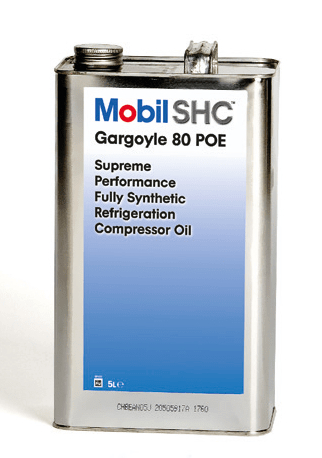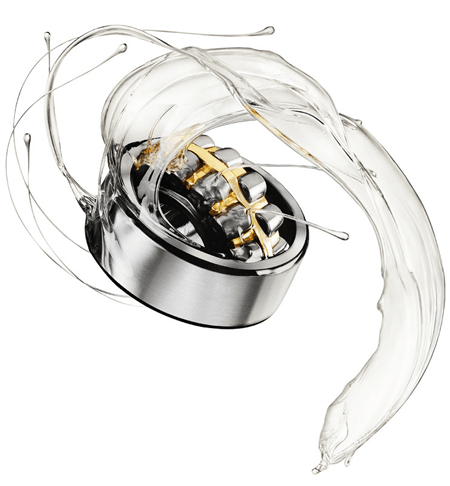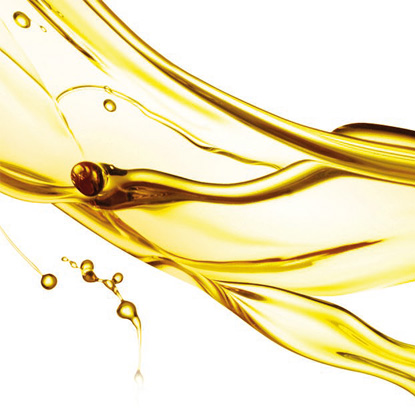The main benefits of using this “natural” fluid are the strong better cooling capacity for relatively low installed compressor power, an Ozone Depletion Potential (ODP) of 0, and a Global Warming Potential (GWP) of 1. The low ODP and GWP values can make this an “ideal” fluid for many users. However, R-744 presents technological challenges in its implementation and maintenance and cannot be used for all applications. Let us review this technology with Jean-Yves Clairé, a Lubrication Engineer at ExxonMobil.
Mr Clairé, could you explain the challenges related to the lubrication of CO2 compressors ?
J-Y. C.: Facilities operating with R-744 present three significant technological challenges: the pressures involved in facilities using subcritical and transcritical CO2 systems, the high solubility of CO2 in the lubricants can potentially lead to an excessive drop in viscosity and the solvent effect of CO2 can reduce the thickness of the lubricating film on moving parts. In so-called “miscible” facilities (those designed on the principle of perfect miscibility between the refrigerant and the lubricant), certain standard polyolester oils (POE) show their limitations in CO2 operating conditions.
What solutions has ExxonMobil developed to overcome these constraints ?
J-Y. C.: In order to fully meet user requirements, ExxonMobil has developed, for miscible CO2 systems, a polyolester oil with innovative and advanced technology providing increased lubrication performance. The features and benefits of the new polyolester technology are, firstly, the excellent low temperature fluidity of the lubricant and its potential to improve evaporator efficiency. Secondly, the lubricant provides excellent control of in-service viscosity for optimal mechanical protection of compressors, extended compressor life and possible increase in maintenance intervals.
How did you go about validating the new product ?

J-Y. C.: The validation of the new POE technology developed by ExxonMobil was carried out in a large pig abattoir in Brittany. Its refrigeration system is composed of a CO2/ammonia loop: the ammonia circuit consists of two screw compressors and the CO2 circuit is made up of four reciprocating compressors.
After having faced two successive breakages of the same compressor that required a new replacement each time due to a lack of lubrication with the oil used previously, and one maintenance intervention to replace the pistons and cylinders in a 2nd compressor, the four reciprocating compressors used were switched to “Mobil SHC Gargoyle 80 POE” starting in December 2013.
The compressor producing hot CO2 gas for the daily defrosting of evaporators located in the freezing tunnels was the first to be lubricated with Mobil oil. The operating, and so lubrication, conditions of this compressor are the most severe with higher pressures and temperatures. It was in this compressor, essential to the working of the refrigeration system in the abattoir, that the compressor breakages were reported.
What were the results of these tests ?
J-Y. C.: The trial period using “Mobil SHC Gargoyle 80 POE” ended with the inspection of all lubricated parts in the compressor producing hot gas during its periodic servicing at 5,600 operating hours. The inspection was carried out in the presence of the compressor manufacturer, the company specialised in the maintenance and operation of industrial refrigeration facilities, the client, and ExxonMobil field technical services and manufacturer relations.
All participants in the servicing of the compressor noted the excellent general condition of the compressor and of all of its lubricated mechanical parts and, in particular, the very good condition of the parts related to piston no.1, the piston subjected to the highest temperature and pressure conditions in this type of machine. All the parts were still coated in a film of lubricant with a good appearance in contrast to the presence of significant wear marks and dry appearance when the previous oil was used and this with the same operating conditions.
As an example of the strong lubrication performance in this reciprocating compressor lubricated with “Mobil SHC Gargoyle 80 POE”, the content of wear metals in iron and aluminium were 13mg/kg (ppm) and 3mg/kg (ppm) respectively after 5,600 operating hours. The very low levels of wear metals were particularly remarkable for reciprocating compressors.
From an economic point of view, what are the benefits of the lubricant for the operator of the facilities?
 J-Y. C.: Due to the excellent mechanical stability of the lubricated parts, the use of Mobil SHC Gargoyle 80 POE has allowed periodic servicing to be moved to 6,000 hours with a target of 8,000 hours. With the previous oil, the manufacturer had recommended bringing servicing down to every 4,500 hours. The increased operation time between periodic servicing will allow the abattoir to reduce maintenance costs by €2,640 per compressor and per year with a total reduction of €10,560 per year for its fleet of reciprocating compressors using CO2 on the basis of periodic inspections every 6,000 hours.
J-Y. C.: Due to the excellent mechanical stability of the lubricated parts, the use of Mobil SHC Gargoyle 80 POE has allowed periodic servicing to be moved to 6,000 hours with a target of 8,000 hours. With the previous oil, the manufacturer had recommended bringing servicing down to every 4,500 hours. The increased operation time between periodic servicing will allow the abattoir to reduce maintenance costs by €2,640 per compressor and per year with a total reduction of €10,560 per year for its fleet of reciprocating compressors using CO2 on the basis of periodic inspections every 6,000 hours.
In relation to the energy efficiency of the system, does the new product provide any improvement ?
J-Y. C.: Indeed, other than the increase in maintenance intervals, a reduction in electrical power of 2 to 3 kW from an average of 100 kW consumed in similar running and load conditions were seen by the key “hot gas” compressor at the Breton facility. The savings can be valued at €599 per year and per compressor. The explanation rests in the reduction of the traction coefficient (which characterises the internal friction of oil molecules during the flow of lubricant under high pressures) of “Mobil SHC Gargoyle 80 POE” in relation to the oil used previously.
These energy savings are in direct relation to the reduction of the traction coefficient of the innovative POE technology molecules: reduction of internal energy loss due to friction within the lubricant and increase in mechanical work at an identical electrical consumption.
What conclusions can be drawn from the large-scale trial ?
J-Y. C.: To summarise1, Mobil SHC Gargoyle 80 POE allows a reduction in maintenance costs thanks to an increase in time between periodic compressor visits and an improvement in productivity due to a reduction in energy costs.
In terms of security, operator interventions are minimised thanks to an increase in time between periodic compressor inspections. In relation to the environment, a reduction in waste can be observed thanks to a reduction in the number of oil changes by increasing the life of lubricant loads in service.
Finally, at the level of productivity, there is a gain of €10,560 per year on the basis of periodic inspections every 6,000 hours and a reduction in the power consumption of each compressor, at a load equivalent to 2 to 3% of the electrical power consumed.
1 This summary was established based on the field trial carried out with “Mobil SHC Gargoyle 80 POE” at an abattoir operating four reciprocating compressors using CO2 between December 2013 and April 2015. Current results are subject to variations according to the type of equipment in service, its maintenance condition, operating conditions, the environment and the lubricants used previously. In case of doubt, consult the maintenance manual provided by the manufacturer.
The validation work was recognised and validated by management at the industrial site and was the subject of a Proof of Performance report available on the website www.mobilindustrial.com.
Esso SAF, a public limited company with a capital of €98,337,521.70, RCS Nanterre 542 010 053, 5/6 place de l’Iris 92400 Courbevoie, markets the Mobil brand in France – a registered trademark owned by Exxon Mobil Corporation or by one of its subsidiaries, including Esso SAF, whose legal independence is not here called into question, each being independent.

